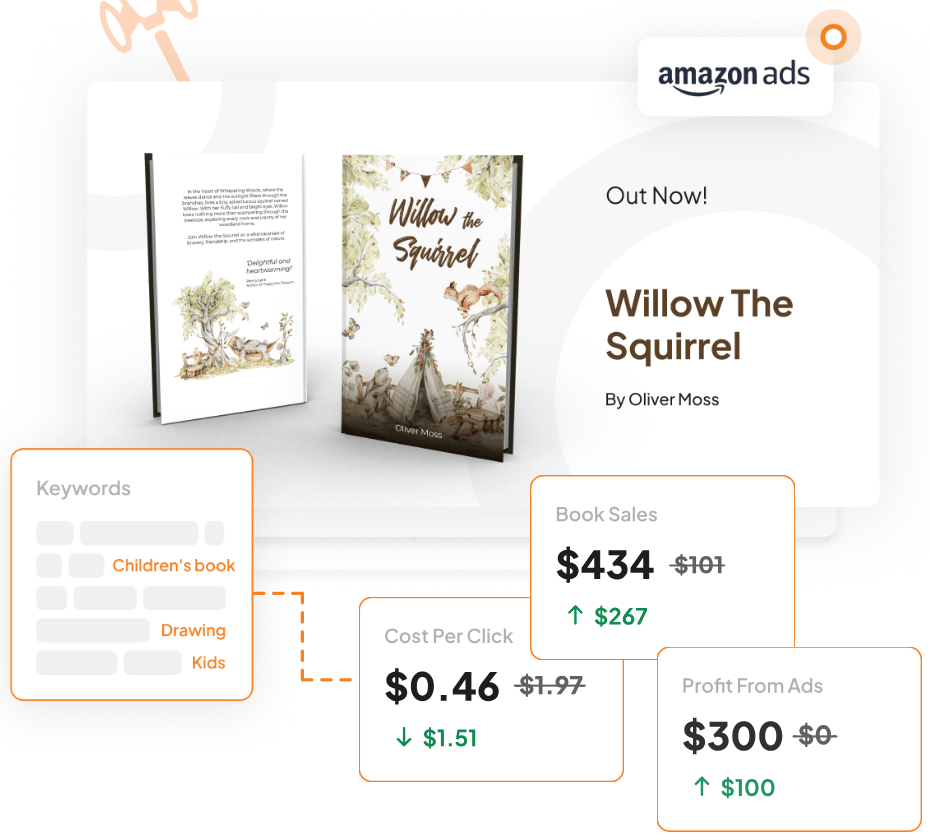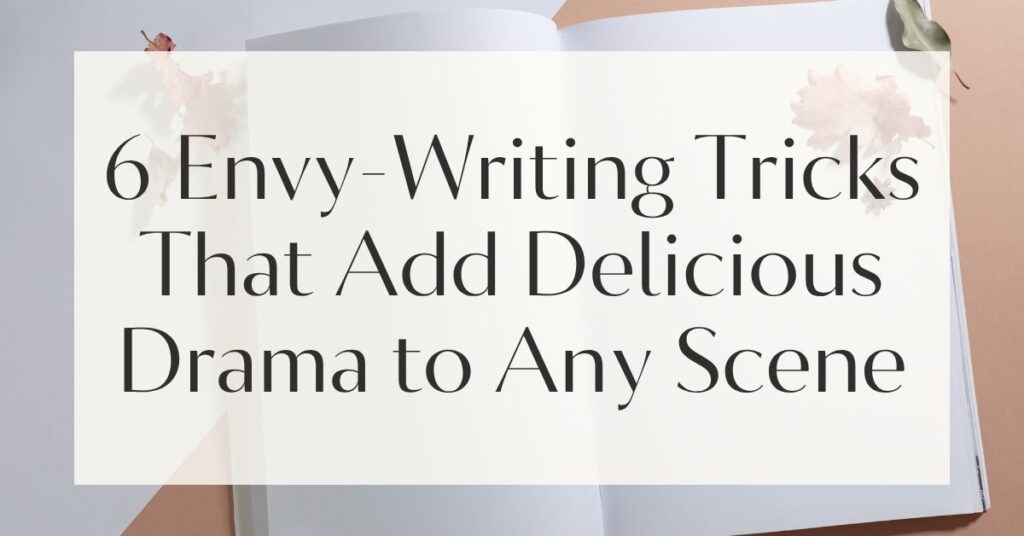Imagine a scene where a character’s heart races, eyes narrow, and fists clench as they watch someone else bask in the limelight. Envy is a powerful emotion that can add a delicious layer of drama and depth to any narrative.
But how do you wield this emotion effectively in your storytelling? In the intricate tapestry of human emotions, envy stands out as a vibrant thread, capable of weaving tension and intrigue into your narrative.
This blog post will explore envy writing techniques that can elevate your storytelling, transforming your scenes into riveting experiences for your readers.
Understanding Envy in Writing
Envy is not just a mere feeling; it’s a complex emotion that can drive characters to the brink, fuel plotlines, and deepen the reader’s connection to the story. By understanding envy, writers can create multidimensional characters and gripping narratives that resonate on a personal level.
Google Docs is for notes. Scrivener is for novels. Upgrade your writing game and try it for free today!

Defining Envy and Its Importance
Envy is often confused with jealousy, but it has its own unique flavor. While jealousy involves fear of losing something we possess, envy is the bitter longing for something possessed by another.
It’s that green-eyed monster that whispers in the ear of your character, urging them to covet, compete, and sometimes, even sabotage. In storytelling, envy serves as a catalyst for conflict and character development, pushing characters to make choices that reveal their deepest desires and darkest fears.
Explore the nuanced differences between envy and jealousy in your characters. Jealousy can lead to protective actions, while envy might push characters toward ambition or sabotage. Understanding this distinction can help craft more believable and relatable narratives.
Distinguishing Between Envy and Jealousy
Though often used interchangeably, envy and jealousy are distinct emotions that can lead to different narrative outcomes. Envy arises when a character desires what another possesses, leading to feelings of inferiority or resentment.
Jealousy, however, is the fear of losing something valuable to another. Recognizing these differences allows writers to create more precise emotional landscapes for their characters, adding layers to their motivations and actions.

Techniques to Harness Envy in Your Narrative
To harness the full potential of envy in storytelling, writers can employ specific techniques that highlight this emotion’s complexity and power. These methods can transform envy from a simple feeling into a driving force within your narrative.
1. Show, Don’t Tell: Physical Manifestations of Envy
Envy can be a visceral emotion, manifesting through physical reactions that reveal a character’s inner turmoil. Instead of simply stating that a character is envious, show it through their actions and body language.
A clenched jaw, narrowed eyes, or a sarcastic laugh can speak volumes about a character’s envy without uttering a word. These subtle cues can convey the depth of their feelings, creating a more immersive and engaging experience for the reader.
Consider the physical cues of envy in your characters:
- Narrowing eyes
- Clenching fists
- Grinding teeth
- Tightening jaw
2. Create Complex Characters: The Enviers and the Envied
Complex characters are the heart of compelling storytelling. By crafting characters who both envy and are envied, you can explore the multifaceted nature of envy.
The envier may be driven by a sense of inadequacy or ambition, while the envied might grapple with the pressure of living up to others’ perceptions. This dynamic can lead to rich character arcs and intricate plotlines that keep readers invested in their journey.
When developing characters driven by envy, consider their backstory and motivations. What experiences have shaped their envious nature? This understanding can add depth and authenticity to their actions and decisions.
No marketing platform? No social following? No problem!
Publisher Rocket helps you market your debut novel like a pro.
It’s a gamechanger for debut authors – try it today!


3. Use Dialogue to Convey Envy: Subtext and Sarcasm
Dialogue is a powerful tool for expressing envy. Through subtext and sarcasm, characters can reveal their envious feelings without directly stating them.
A backhanded compliment or a veiled jab can hint at underlying envy, adding tension and drama to conversations. This technique allows readers to read between the lines, engaging them in deciphering the true emotions of your characters.
Examples of dialogue-driven envy:
- “Oh, you got promoted? That’s great… for you.”
- “Your new car is nice, even if it’s not my style.”
- “I wish I had your luck. Must be nice.”
4. Weave Envy into the Setting: Atmosphere and Context
The setting of a story can amplify the emotion of envy, creating an atmosphere that reflects the character’s internal struggle.
A character who feels out of place at a luxurious party or uncomfortable in a rival’s opulent home can visually express their envy. By using the environment to mirror a character’s feelings, you can create a richer, more immersive narrative.
| Setting Element | Effect on Envy |
|---|---|
| Luxurious surroundings | Highlight feelings of inadequacy |
| Opulent rival’s home | Create a sense of exclusion |
| Exclusive social events | Emphasize social divides |
5. Leverage Internal Conflict: The Character’s Emotional Landscape
Internal conflict is a fertile ground for exploring envy. Characters experiencing envy often grapple with feelings of inadequacy, self-doubt, and resentment.
By delving into their internal struggles, writers can create a rich emotional landscape that adds depth to the narrative. This exploration can lead to pivotal moments of self-realization or dramatic confrontations that drive the story forward.

6. Build Tension with Envy: Stakes and Consequences
Envy can be a powerful engine for building tension in a story. By raising the stakes and introducing potential consequences, writers can create a sense of urgency and anticipation.
Will the envious character act on their feelings, risking relationships or moral integrity? These high-stakes scenarios keep readers on the edge of their seats, eager to see how the drama unfolds.
The Role of Envy in Character Development
Envy is not merely a plot device; it’s a transformative force that can drive character development and growth. By exploring how envy influences a character’s journey, writers can create compelling arcs that resonate with readers.
Crafting Motivations: Envy as a Driving Force
Envy can serve as a powerful motivator, pushing characters to pursue their goals with renewed vigor.
Whether it’s striving for success, seeking validation, or overcoming personal insecurities, envy can propel characters to take action. By understanding how envy shapes their motivations, writers can create dynamic characters whose journeys are both relatable and inspiring.
Feeling lost with your debut novel?
Fiverr Pro connects you with expert editors, designers, and marketers – everything you need to get your book ready for success!

Transforming Envy into Personal Growth
While envy can lead to destructive behavior, it also offers opportunities for personal growth and transformation.
Characters who confront their envy may discover new strengths or redefine their values. This evolution can lead to redemption arcs or unexpected alliances, enriching the narrative and offering readers a sense of hope and possibility.
Consider how envy can lead to unexpected character growth. A character initially driven by envy might find inspiration in their rival’s success, leading them to pursue their own passions and redefine their goals.
Examples of Envy in Literature and Film
Envy has long been a theme in literature and film, providing rich material for character exploration and narrative tension. By examining classic and contemporary examples, writers can gain insight into how envy can be effectively woven into storytelling.

Analyzing Classic Characters and Their Envious Traits
Classic literature is replete with characters whose lives are shaped by envy. From Shakespeare’s Othello to F. Scott Fitzgerald’s Jay Gatsby, these characters offer timeless lessons on the complexities of envy. By analyzing their traits and motivations, writers can draw inspiration for crafting their own envious characters.
Lessons from Contemporary Narratives
Modern films and novels continue to explore the theme of envy, offering fresh perspectives on its impact. Whether it’s the professional rivalry in “The Social Network” or the personal jealousy in “Gone Girl,” contemporary stories provide valuable insights into how envy can drive plotlines and character dynamics.
Embracing Envy: A Writer’s Journey
As writers, embracing envy as a narrative tool can open new avenues for creativity and storytelling. By viewing envy not as a negative emotion but as a catalyst for drama and growth, writers can craft stories that captivate and resonate with readers.
Finding Inspiration in Envy
Envy can be a wellspring of inspiration, offering writers a lens through which to explore themes of ambition, competition, and self-discovery. By channeling personal experiences of envy into their writing, authors can create authentic and relatable narratives that speak to the human condition.
Using Envy to Connect with Readers
Envy is a universal emotion, one that readers can easily relate to. By incorporating envy into storytelling, writers can forge a deeper connection with their audience, inviting them to reflect on their own experiences and emotions. This connection can transform a good story into a memorable one, leaving a lasting impact on readers.
Invite readers to reflect on their own experiences with envy. By posing questions or creating scenarios that resonate with real-life emotions, writers can foster a deeper engagement with their narrative.








